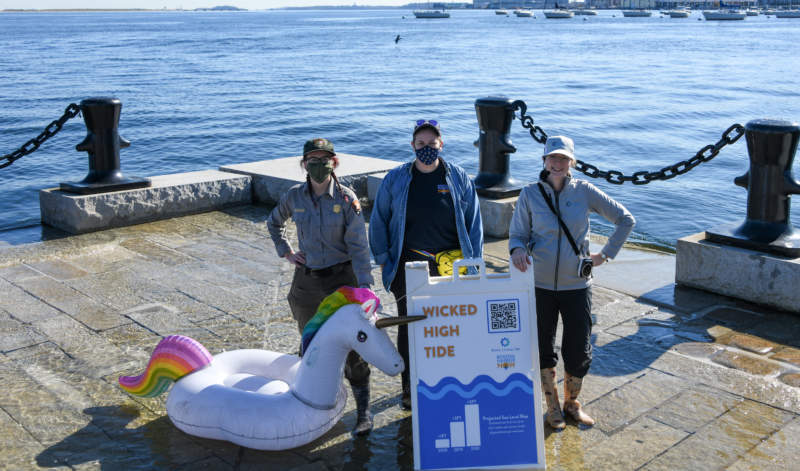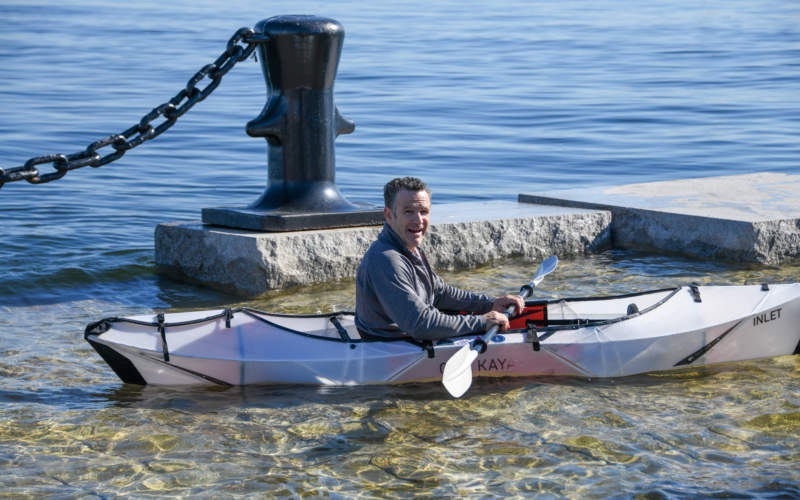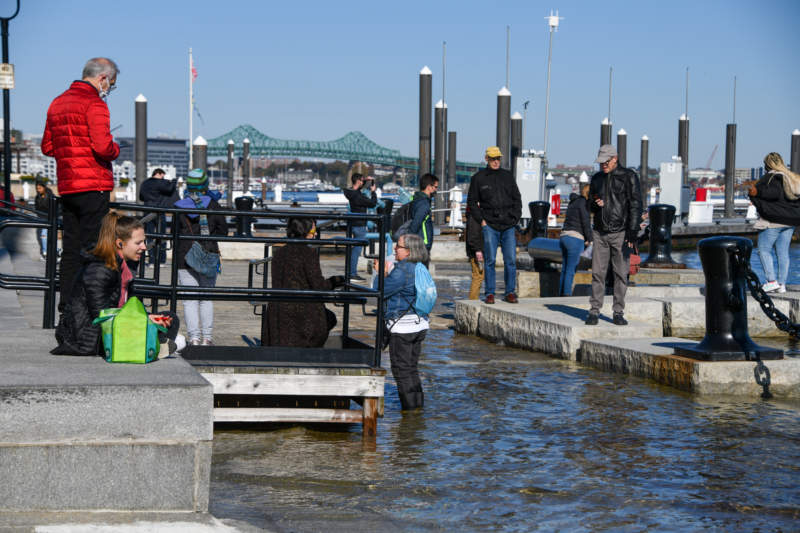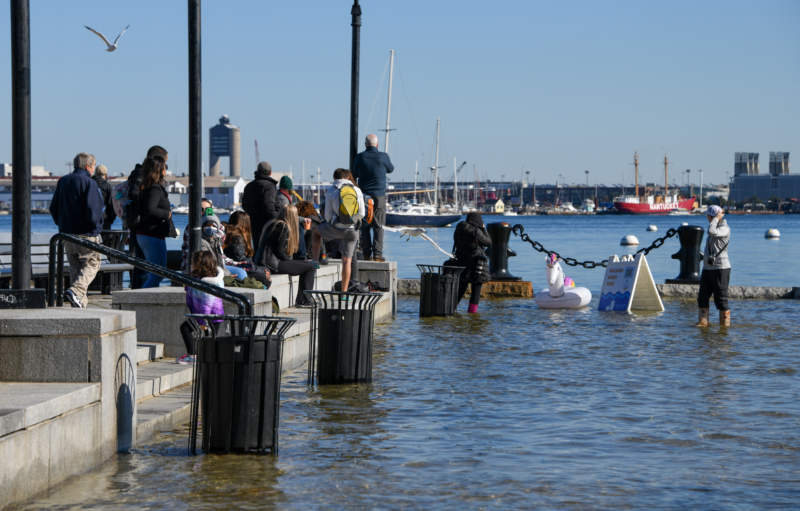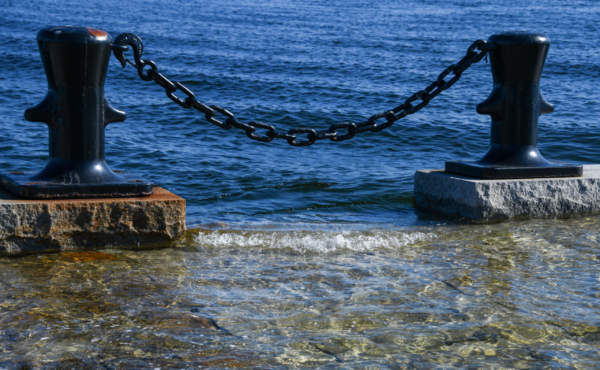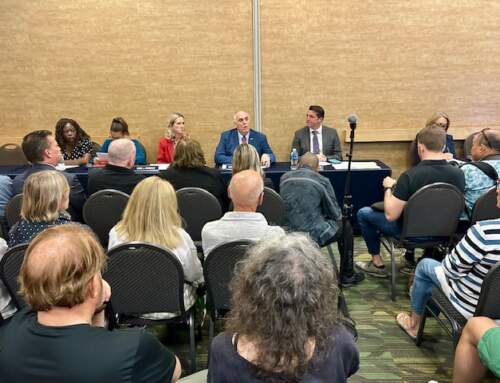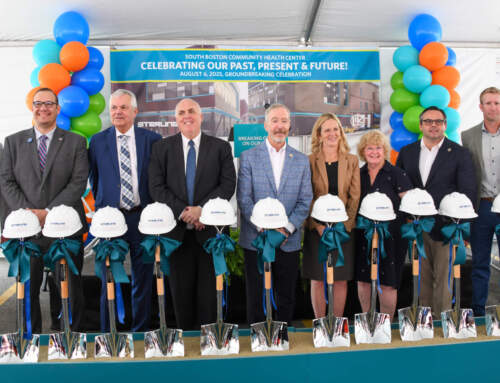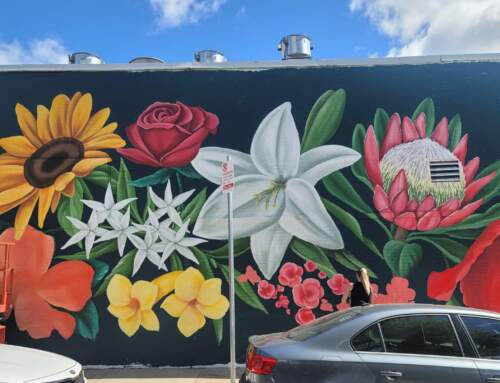By Ginger DeShaney
The wicked high tides that flooded Long Wharf and other parts of the city the weekend of Nov. 6 provided a wake-up call for Boston.
“Even though this is a natural event that we’re experiencing right now, it’s already been influenced by climate change,” said Rebecca Shoer, education and community engagement program manager for the Stone Living Lab. “We also know it’s going to keep rising.
“It’s actually kind of a preview of what sea level rise might be like for Boston. Eventually this could be every single high tide.”
Stone Living Lab, Boston Harbor Now, and the National Park Service hosted “Wicked High Tides” events at Long Wharf last weekend, educating people about Perigean Spring Tides and climate change.
The events were a tangible way for people to realize that this is really happening. Boston will experience these wicked high tides again in December with Long Wharf, Morrissey Boulevard, the Seaport, and East Boston seeing the effects.
The waters have risen about 8 inches since 1950 due to climate change, Rebecca said. It’s predicted that by 2030, the sea will rise about a foot in the Boston area; by 2070 about 3 feet, and by 2100 5 feet or more.
Long Wharf usually stays dry during high tide. A normal high tide is about 6 inches or a foot below the wharf. High tide on Saturday was 12.1 feet, about 2 feet higher than normal.
Before the water started overflowing the wharf, Rebecca put a sign and a unicorn floatie on dry ground to provide a visual representation. As water rose through the stone floor of the wharf, the unicorn started floating. By high tide, the water was nearing the top of Rebecca’s boots and a kayaker paddled his way onto the wharf.
“This is a predictable, natural phenomenon,” Rebecca said. “They are typically called Perigean Spring Tides, but we call them ‘wicked high tides,’ or you might have heard the term King Tides. This is just a really extra extra high tide that we are experiencing right now.”
Tides are mainly driven by the moon, Earth’s closest neighbor, and the pull it has on the ocean. The moon’s orbit is actually oval, so over the weekend, the moon was the closest it gets to Earth, which means it’s in “perigree” or is “perigean,” Rebecca explained, which causes an even stronger pull than normal. It’s also a new moon, so the sun, moon, and Earth all line up; the pull of the sun and the moon combine to make extra high tides, called spring tides. When there is a new moon and the moon is in perigree, it makes for wicked high tides.
Saturday’s weather was beautiful and sunny, with no wind. “All of this flooding is coming from the ocean and from the tides,” Rebecca said.
If this was going on during the recent nor’easter, the water would be down into Boston, flooding MBTA stops, streets, businesses, and homes. “This is what reality might be in the not-too-distant future,” Rebecca said. “That’s something to keep in mind as we talk about sea level rise and what’s going on today.”
The sea level is going to continue rising, “but what we can do now is work on ways to live with it, hopefully mitigate sea level rise, as well as slow it down and hopefully reduce how much the oceans are going to rise eventually,” Rebecca said.
Stone Living Lab is doing research on nature-based solutions that work with our ecosystems, provide benefits to nature, and help deal with sea level rise.
The city of Boston already has done a lot of work in trying to prepare for what climate change might look like for different neighborhoods, Rebecca said. Its Climate Ready Boston website can be found here: https://www.boston.gov/departments/environment/preparing-climate-change
The Climate Ready South Boston page is here: https://www.boston.gov/departments/environment/climate-ready-south-boston.
What can we, as individuals, do? There are choices people can make to reduce their carbon footprint: taking public transit or biking, reducing meat intake, insulating your home, choosing sustainable, renewable energy, Rebecca said.
“One of the most important things is to get involved with your local government,” she said, adding that as towns and cities across the country are trying to make decisions regarding climate change, you should make your voices heard.
“We have to think a lot more long term than we used to,” Rebecca said. “So it’s not just what can we do the next 5-10 years, it’s 50-100 years.”
